World War II: NAS Pensacola, FAW-4, and CASU-7
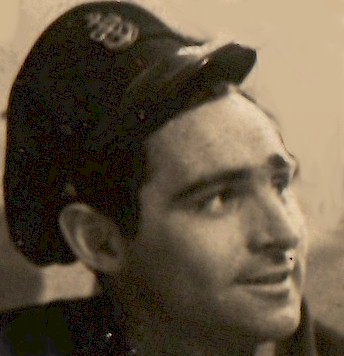 Uncle John was assigned to Flight School at NAS Pensacola He arrived on October 13, 1941. After two weeks he washed out of flight school and was transferred to NAS Pensacola for shore duty.
Shortly after arriving here the Japanese bombed Pearl Harbor and WWII began. John would join
the fight later in the war but first he would spend some time here as an instructor for all the newly arrived Navy personnel that needed training. The site of the current Naval Air Station (NAS) Pensacola opened as the Navy’s first flying school in 1913, only two years after the Navy purchased its first aircraft, the A1 Triad, from Glenn Curtis. The location, lying on the shore of Pensacola Bay, was a nearly perfect fit to the Navy’s needs, since early Naval Aviation was devoted almost entirely to seaplanes. The bay-shore was lined with seaplane ramps, some of which remain today. In 1917, in the middle of American involvement in World War I, the Pensacola site was officially designated as a Naval Air
Station.
Training requirements shifted to include land-based aircraft, and an airfield was established and initially called Station Field. In addition, an auxiliary field was established north of Pensacola and later named Corry Field. In 1927, Corry Field was relocated to a site just north of the Naval Air
Station.
Training slowed dramatically during the Great Depression, but in 1935 the Navy inaugurated its Aviation Cadet training program.
In 1938, federal legislation authorized a 3,000 aircraft ceiling for Naval Aviation, which in turn brought additional growth to The Pensacola Naval Air Station. Auxiliary airfields were added in and around Pensacola.
Uncle John was assigned to Flight School at NAS Pensacola He arrived on October 13, 1941. After two weeks he washed out of flight school and was transferred to NAS Pensacola for shore duty.
Shortly after arriving here the Japanese bombed Pearl Harbor and WWII began. John would join
the fight later in the war but first he would spend some time here as an instructor for all the newly arrived Navy personnel that needed training. The site of the current Naval Air Station (NAS) Pensacola opened as the Navy’s first flying school in 1913, only two years after the Navy purchased its first aircraft, the A1 Triad, from Glenn Curtis. The location, lying on the shore of Pensacola Bay, was a nearly perfect fit to the Navy’s needs, since early Naval Aviation was devoted almost entirely to seaplanes. The bay-shore was lined with seaplane ramps, some of which remain today. In 1917, in the middle of American involvement in World War I, the Pensacola site was officially designated as a Naval Air
Station.
Training requirements shifted to include land-based aircraft, and an airfield was established and initially called Station Field. In addition, an auxiliary field was established north of Pensacola and later named Corry Field. In 1927, Corry Field was relocated to a site just north of the Naval Air
Station.
Training slowed dramatically during the Great Depression, but in 1935 the Navy inaugurated its Aviation Cadet training program.
In 1938, federal legislation authorized a 3,000 aircraft ceiling for Naval Aviation, which in turn brought additional growth to The Pensacola Naval Air Station. Auxiliary airfields were added in and around Pensacola.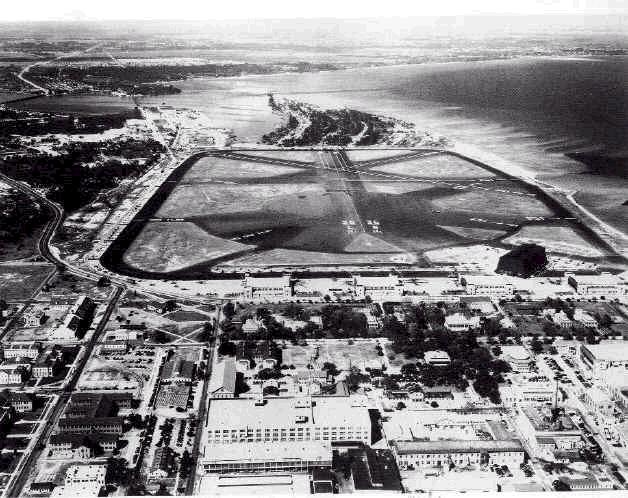 Saufley Field was commissioned in 1940, and Ellyson Field in 1941. Three more auxiliary fields were added as the America entered World War II—Bronson and Barin Fields in 1942, and Whiting Field in 1943.
Various types of training took place in Pensacola during World War II in both land-planes and seaplanes. Seaplane instruction was conducted using PBY flying boats and OS2U, SC, and N3N floatplanes. Chevalier field hosted, among other activities, the flight instructor school, which boasted a complement of SNJ’s, SNV’s, N3N’s, and N2S’s, together with the Assembly and Repair Department. By this time, actual flight instruction was delivered at the auxiliary airfields.
As Pensacola
Station expanded during the war, Uncle John transferred to the newly established Bronson Field in December 1942.
On November 18, 1942, NAAS Bronson Field was commissioned, named in honor of Lt.(j.g.) Clarence Bronson, Naval aviator No. 15, who lost his life in a premature bomb explosion at Indian Head, Md.
Bronson Field was used primarily for dive bomber and fighter training, the latter moving to Barin Field in late 1942. The training program ran the
Saufley Field was commissioned in 1940, and Ellyson Field in 1941. Three more auxiliary fields were added as the America entered World War II—Bronson and Barin Fields in 1942, and Whiting Field in 1943.
Various types of training took place in Pensacola during World War II in both land-planes and seaplanes. Seaplane instruction was conducted using PBY flying boats and OS2U, SC, and N3N floatplanes. Chevalier field hosted, among other activities, the flight instructor school, which boasted a complement of SNJ’s, SNV’s, N3N’s, and N2S’s, together with the Assembly and Repair Department. By this time, actual flight instruction was delivered at the auxiliary airfields.
As Pensacola
Station expanded during the war, Uncle John transferred to the newly established Bronson Field in December 1942.
On November 18, 1942, NAAS Bronson Field was commissioned, named in honor of Lt.(j.g.) Clarence Bronson, Naval aviator No. 15, who lost his life in a premature bomb explosion at Indian Head, Md.
Bronson Field was used primarily for dive bomber and fighter training, the latter moving to Barin Field in late 1942. The training program ran the
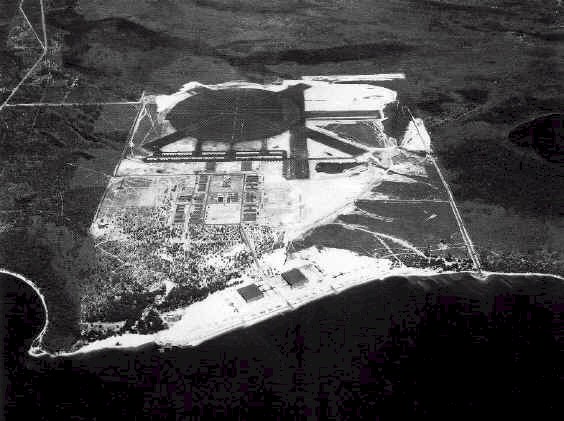 whole gamut from instruments to formation and night flying, plus combat and navigation. N2S Stearman aircraft were used for checkouts in inverted spins.
In January, 1943, PBYs showed up for seaplane training, supplementing training at NAS Pensacola
main side. Many multi-engine land based pilots from Corry field also checked out in the seaplanes.
Bronson Field consisted of a large, circular mat, crisscrossed by four 4,000-foot runways. Across the bay in Alabama, several grass airstrips were used for landing/takeoff practice.
After two years of training recruits, Uncle John went to the war.
whole gamut from instruments to formation and night flying, plus combat and navigation. N2S Stearman aircraft were used for checkouts in inverted spins.
In January, 1943, PBYs showed up for seaplane training, supplementing training at NAS Pensacola
main side. Many multi-engine land based pilots from Corry field also checked out in the seaplanes.
Bronson Field consisted of a large, circular mat, crisscrossed by four 4,000-foot runways. Across the bay in Alabama, several grass airstrips were used for landing/takeoff practice.
After two years of training recruits, Uncle John went to the war.
The Aleutian Campaign
Of all the places on the globe in which to fight a war Alaska’s Aleutian Islands were possibly the worst place on Earth. The formidable weather conditions of the Aleutian Islands were some of the fiercest that nature had to offer. Freezing winds from the Artic North would combine with warm air and wind from the Japanese Current in the South. The combination would cause extreme high winds, heavy thick fog, and ferocious rain and snowstorms. The clouds cover the islands anywhere from 20 to 90 percent of the year with cold, drizzling rain during the summer months and blinding sleet and snow during the winter months. The average annual precipitation is forty to fifty inches, that fall around two hundred days per year. The fog is always prevalent, especially during July and August. The temperatures average around fifty degrees in the summer and in the low thirties during the winter. The wind blows in from the north on average of twelve knots and frequently gusts up to 24 knots for periods of 24 hours or more. The winds are frequently unpredictable with the sudden phenomenon williwaw winds of 140 knots or more. The weather is not the only formidable force that the Americans would have to fight in the Aleutians the terrain is equally discouraging. The land is mountainous and unforgiving, with 57 volcanoes and remnant glaciers. Rocky irregular coastlines dominate the islands. Sheer cliffs extend straight out into the sea and strong currents and undertows add to the navigation problems around the islands. The soft ground is a combination of volcanic ash, sand, and mud known as muskeg. This soft earth makes engineering and construction of facilities difficult. The Navy was the only service interested in developing the Aleutians for strategic purposes. Its location lent itself to the possibility of the islands use as a springboard for invasion. In 1911 the Navy decided to develop the islands starting with the establishment of radio stations used for navigation in the North Pacific and Bearing Sea. Next in 1939 came the establishment of a weather station on Unalaska-Amaknak Island and the development of that island’s only natural harbor-Dutch Harbor. Construction of the base began in September 1940 and was completed one year later on August 21, 1941. The location was less suitable for the Army to build an airfield, so after considerable surveying the Army decided to build an Airbase on Umnak island about 70 miles southwest of Dutch harbor. Construction of the runway would not take place until January 1942 and under arduous conditions. The runway was completed in March and the air base became operational in April.
Fleet Air Wing Four (FAW-4)
 Originally called Patrol Squadron Four out of Sand Point Naval Base in Seattle, Washington. The
PAW-4 consisted of two VP squadrons VP-41 and VP-42 from Sand point. VP-43 and VP-44 out of San Diego, CA were later added to the Air Wing. These squadrons made routine deployments to the Alaskan frontier. In July 1941, 5 PBY-5 seaplanes from VP-42 landed at Womens Bay on Kodiak Island to begin the first four-month deployment. The squadron was relieved in October by VP-41, the six PBY’s began their patrols of the Gulf of Alaska and the North Pacific. Tensions between the Japanese and the Americans were at a breaking point during this period. And the patrols were increased. Aiding the seaplanes was the Seaplane Tender USS Gillis, an old four-pipe WWI destroyer converted to seaplane tending duties. The Gillis was anchored off of Kodiak, tending planes, watching out for any signs of aggression. On November 9, 1941 Captain Leslie E. Gehres assumed command of Patrol Air Wing FOUR, the stage was set for the air wing, they wouldn’t have to wait long. On December 7, the Japanese struck at Pearl Harbor and devastated the US Fleet there. With the U.S. at war with Japan the patrol wing increased it’s patrols looking for the enemy. It soon became apparent that the Japanese were not interested in The Alaskan Frontier and they were more intent on carrying out their Far East operations. However the general consensus was that the Japanese once they finished their conquest of the Far East they a would turn there attentions to Alaska. Indeed the Japanese were concerned about Alaska fearful that the Americans would use it as a staging area for an invasion of Japan. As the beginning of 1942 progressed the Japanese expanded their empire to include French Indo-China, the Philippines, Burma, Singapore, Hon Kong, and the northern coast of New Guinea. They were finally turned back at the Battle of the Coral Sea.
Originally called Patrol Squadron Four out of Sand Point Naval Base in Seattle, Washington. The
PAW-4 consisted of two VP squadrons VP-41 and VP-42 from Sand point. VP-43 and VP-44 out of San Diego, CA were later added to the Air Wing. These squadrons made routine deployments to the Alaskan frontier. In July 1941, 5 PBY-5 seaplanes from VP-42 landed at Womens Bay on Kodiak Island to begin the first four-month deployment. The squadron was relieved in October by VP-41, the six PBY’s began their patrols of the Gulf of Alaska and the North Pacific. Tensions between the Japanese and the Americans were at a breaking point during this period. And the patrols were increased. Aiding the seaplanes was the Seaplane Tender USS Gillis, an old four-pipe WWI destroyer converted to seaplane tending duties. The Gillis was anchored off of Kodiak, tending planes, watching out for any signs of aggression. On November 9, 1941 Captain Leslie E. Gehres assumed command of Patrol Air Wing FOUR, the stage was set for the air wing, they wouldn’t have to wait long. On December 7, the Japanese struck at Pearl Harbor and devastated the US Fleet there. With the U.S. at war with Japan the patrol wing increased it’s patrols looking for the enemy. It soon became apparent that the Japanese were not interested in The Alaskan Frontier and they were more intent on carrying out their Far East operations. However the general consensus was that the Japanese once they finished their conquest of the Far East they a would turn there attentions to Alaska. Indeed the Japanese were concerned about Alaska fearful that the Americans would use it as a staging area for an invasion of Japan. As the beginning of 1942 progressed the Japanese expanded their empire to include French Indo-China, the Philippines, Burma, Singapore, Hon Kong, and the northern coast of New Guinea. They were finally turned back at the Battle of the Coral Sea.
Operation MI
On April 13 Admiral Yamamoto of the Imperial Japanese Navy presented a plan to the Imperial Headquarters consisting of the Emperor and the Army and Navy Chiefs of Staff. The plan called the Midway- Aleutian Directive was adopted on April 16, 1942. The Army Chiefs initially opposed the plan, however two days later after Lt. Col. Doolittle’s raid on Tokyo the opposition to plan vaporized. The Aleutian operation of the plan was to be a reconnaissance in force with the objective of destroying the suspected garrison on Adak. A diversionary raid was planned for an air strike on Dutch Harbor and seizing the islands of Attu and Kiska in order to extend the Japanese defensive perimeter line. The Japanese launched their attack of the Aleutians one-day prior to the Midway battle in order to draw the American forces away from Midway. Two Aircraft Carriers the Ryujo and the Junyo, along with two heavy cruisers, three destroyers, and an oiler were chosen for the strike on Dutch Harbor. While a smaller force of a Light cruiser, four destroyers, three transports with 1,200 men, and a seaplane tender destined for Adak but went to Attu while the Garrison on Adak was destroyed. Another force of One Light Cruiser, two converted cruisers, four destroyers, and three converted gunboats, along with 500 troops, and 700 construction personnel were all bound for Kiska. The Japanese struck in the Morning of June 3, 1942 The Americans knew the Japanese were coming so the damage was light. The Japanese launched their aircraft at 0545 hrs. Visibility was poor but the Japanese managed to find the target. By 0635 the attack was over and 25 Americans were killed. Three PAW-4 aircraft from VP-41 and VP-42 were shot down while the rest were out looking for the Japanese. The next day 10 Japanese fighters and 11 dive-bombers made a second assault on Dutch Harbor. Several oil tanks and the merchant ship Northwestern were set ablaze. PAW-4’s VP-41 and VP-42 continued to try and find the Japanese fleet. The fleet was spotted by radar about 210 miles southwest from Dutch Harbor by Lt. Marshall C. Freerks’s PBY. He reported it, shadowed the force for about an hour, and then when his fuel reserves were running low attempted to bomb it. His attack was driven off by AA fire. The Japanese did not have any fighters in the air due to the poor weather conditions for launching. After running low on fuel he then returned to base. After he left another PBY arrived on the scene. But, by this time the Japanese had launched their fighter cover and the Zeroes shot down the lumbering PBY with all hands lost. Two more PBY’s arrived on the scene and one was hit by AA fire the other was never seen again, presumably shot down by the fighters. The Army sent in their bombers and successful in attacking the force. A torpedo scored a hit on a cruiser and one other ship was bombed. At the end of the battle Patrol Wing Four lost four PBY’s shot down by Zeroes, one missing, and two destroyed on the ground. Twenty-three men were killed, two wounded, three became Prisoners of War, and ten were missing in action. The Japanese losses amounted to one Zero, one Kate, five Vals, and two Daves. The Zero damaged by ground fire, crash- landed on Akutan killing the pilot. This would have later serious consequences for the Japanese, as the fighter was recovered by the Americans who repaired and tested it for weaknesses, then exploited those weaknesses during the rest of the war. On June 7 the Japanese invaded Attu and the next day Kiska Island, they quickly set up defenses and dug in to stay. The rest of the Japanese fleet did not do so well during the operation. The Japanese lost four carriers and two cruisers during the Midway Island phase of the operation.
"Kiska Blitz"
Soon after the occupation relief for the two VP squadrons came when VP-43 deployed to the Aleutians. On June 10th Captain Gillis ordered the USS Gillis into Nazan Bay, Atka where it could support PAW-4’s attacks on Kiska Island. VP-43 was augmented with crews form VP-41 and VP-42. Captain Gehres ordered the two squadrons to assist with the attacks of Kiska when not performing normal patrols. The Squadrons had standing orders up completion of their patrols to head towards Kiska and drop their bombs on the Japanese before heading home. VP-43 would head to Nazan Bay and conduct operations form there. The attacks against Kiska would go on for days and PAW-4 would lose several planes. After several days of operation and only one damaged enemy destroyer for it’s efforts the Americans called it quits and left Nahan Bay. They evacuated the Atka village and burned the town so the Japanese couldn’t use it. The PBY’s and the Gillis headed back to Dutch Harbor.
The bombing missions continued during July and August with very little results. On August 30, 1942 the US army sent 4,500 troops to occupy Adak Island and constructed an airfield there.While th eArmy was constructing its bas e PAW-4 flew patrols over the Aleutians in support of the landings. To Support the PBY’s Captain Gehres sent the Seaplane tenders Casco and Gillis back to Nazan Bay and the Teal to Kuluk Bay. The Japanese Submarine RO-61 found the two tenders there on the night of August 29 and fired two torpedoes at them one torpedo missed and landed on the beach the other hit the USS Casco and severely damaged the ship killing two men, wounding three, and three were missing. The submarine attempted to flee but was spotted by a PBY and the plane bombed and damaged the ship. The Sub submerged, but was training an oil slick behind it. The PBY radioed a destroyer the USS Reid and the Destroyer raced over to the area and depth charged the sub to the surface. Once on the surface the sub was fired upon until it sank with the loss of all the crew, save five that were taken prisoner. With the occupation of Adak PAW-4 extended it’s patrols to the approaches from the Kuriles to the Aleutians. The first raid from Adak was flown on September 14th Army bombers raided the island of Kiska serving notice to the Japanese that the Americans were getting closer.
Click
here to read more about the Aleutians Campaigns during WWII
Uncle John arrived on 17 Oct 1943 and was assigned as the Aviation
Radioman Chief for HEDRON, PATSU 4-6. In November of 1942 Navy Patrol Wings were redesignated Fleet Air Wings, to permit the organization of patrol aviation on the task force principle. The practice of assigning a standard number of squadrons to each Wing was changed to provide for the assignment of any and all types of aircraft required by the Wing to perform its mission in its particular area. In March of 1943 Fleet Air Wing 4 headquarters moved westward on the Aleutian chain
from Kodiak to Adak. On May 4--The first regular patrols began from Amchitka, extending the search coverage by Fleet Air Wing 4 beyond Attu toward the Kuriles. By June 7--The establishment of NAF Attu, within 1 week of its capture from the Japanese, brought Fleet Air Wing 4 bases to the tip of the Aleutian chain, nearly 1,000 miles from the Alaskan mainland and 750 miles from Japanese territory in the Kuriles. On April 26, 1944--Headquarters of Fleet Air Wing 4 was established on Attu, western most island of the Aleutians.
redesignated Fleet Air Wings, to permit the organization of patrol aviation on the task force principle. The practice of assigning a standard number of squadrons to each Wing was changed to provide for the assignment of any and all types of aircraft required by the Wing to perform its mission in its particular area. In March of 1943 Fleet Air Wing 4 headquarters moved westward on the Aleutian chain
from Kodiak to Adak. On May 4--The first regular patrols began from Amchitka, extending the search coverage by Fleet Air Wing 4 beyond Attu toward the Kuriles. By June 7--The establishment of NAF Attu, within 1 week of its capture from the Japanese, brought Fleet Air Wing 4 bases to the tip of the Aleutian chain, nearly 1,000 miles from the Alaskan mainland and 750 miles from Japanese territory in the Kuriles. On April 26, 1944--Headquarters of Fleet Air Wing 4 was established on Attu, western most island of the Aleutians.
FAW-4, HEDRON, PATSU 4-6, Amchitka, Aleutians Islands
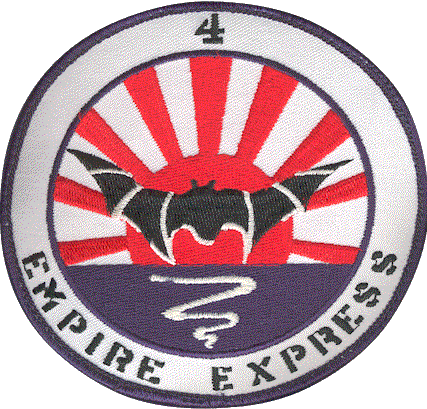 Many units made up Fleet Air Wing four, the HEDRON or Headquarters Squadron was a subdivision of the Fleet Air Wing. Each unit was located on a different island in the Aleutian chain. The Islands were Kodiak, Dutch Harbor, Adak, and Amchitka. Later Kiska and Attu were set up for squadrons after the Japanese were kicked off or left. The FAW-4 Headquarters Squadrons started out originally with just three PATSU units, PATSU 4-6 was an expanded unit located on Amchitka after that Island was taken over in January 1943. PATSU, which was an acronym for Patrol Service Unit, comprised of mechanics and technicians. These repair specialists would fix the aircraft in the squadrons assigned to them. Repairs ranged from minor maintenance to major overhauls. The men would work 12-16 hours a day, in the
freezing rain and cold for most of the time. The PATSU's were largely responsible for the success of the Fleet Air Wing 4. For the number of missions and hours flown each day by the Patrol squadrons depend largely on how fast and well the specialists of ordnance men, metalsmiths, radiomen, and fuel crews, could do their job. Uncle John was the leading Chief Petty Officer of the unit he was responsible for ensuring that the aircraft were up and ready for action. He made out the sailors work assignments and supervised the repairs on each of the aircraft making sure the planes were fixed and fixed properly.
FAW-4 consisted of many VP or patrol squadrons. These Aircraft Squadron's would deploy to the Aleutians from the U.S., and would be stationed along with the HEDRONs on each island. Each a squadron was usually comprised of seven PBY-5a's, later the aircraft were changed over to
PV-1 Venturas and then to the more updated PV-2 Harpoon patrol planes. Jim Decker a Radioman stationed with my Uncle John described to me the conditions of the patrols. The PBY-5a's would fly out on a patrol "Leg "from eight to anywhere up to thirteen hours, depending on the patrol. The "leg" consisted of a triangular shaped route that extended for several hundred miles. Each plane had a forward-looking SCR-521 ASV radar that consisted of the radar set connected to a "Yagi" antennae located on the wing. Later a side looking radar was installed in each aircraft, which vastly extended the radar capability of the aircraft. Each radar unit had an operator station located behind the co-pilot. This station consisted of a radar screen with a rubber boot over it. The crew would take turns looking into the screen after an hour or so otherwise the men would get "buggy" from looking at the screen too long. The PBY Catalinas served the VP squadrons well, but they were eventually replaced with the PV-1
Venturas and PV-2 Harpoons. The PV's were better suited for the arduous conditions in the Aleutians, the were powered by two 2000 horse powered Pratt and Whitney R-2800-31, Double Wasp engines which gave them a top speed of 312 miles per hour. In addition they were equipped with two 50 caliber machine guns mounted in a Martin turret, two to five 50 Cal Machine guns mounted in the nose, and two 30 cal machine guns mounted in the tail. Further they could carry a bomb load of 3,000 pounds and had a range of 1,660 miles.
The PV's would fly from Attu along the Russian Kamchatka peninsula towards the Japanese islands of Shimushu and Paramushiro in the Kuriles Island chain. This Island chain extended from the Kamchatka peninsula down towards Japan. There they would bomb the airfields that the Japanese had recently constructed there. The Japanese had built up a formidable defense on the Kuriles Islands, guarding the northern approaches to Japan from the Americans and the Russians. Most of the defensives were located on the larger island of Paramushiro. There the Japanese had constructed three airfields and built the Kashiwabara Army Staging Area. Just north of Paramushiro on Shimushu, the headquarters of the Fifth Fleet was located at the Kotaoka Naval Base. Once Attu was secured in August 1943 these were the prime targets of bombing raids of the 11th Air Force and FAW-4. Uncle John would remain in the Aleutian theatre for 14 months earning the Asia-Pacific Campaign medal. He would leave FAW-4 and transfer to COMFAIR at NAS Seattle for reassignment.
Many units made up Fleet Air Wing four, the HEDRON or Headquarters Squadron was a subdivision of the Fleet Air Wing. Each unit was located on a different island in the Aleutian chain. The Islands were Kodiak, Dutch Harbor, Adak, and Amchitka. Later Kiska and Attu were set up for squadrons after the Japanese were kicked off or left. The FAW-4 Headquarters Squadrons started out originally with just three PATSU units, PATSU 4-6 was an expanded unit located on Amchitka after that Island was taken over in January 1943. PATSU, which was an acronym for Patrol Service Unit, comprised of mechanics and technicians. These repair specialists would fix the aircraft in the squadrons assigned to them. Repairs ranged from minor maintenance to major overhauls. The men would work 12-16 hours a day, in the
freezing rain and cold for most of the time. The PATSU's were largely responsible for the success of the Fleet Air Wing 4. For the number of missions and hours flown each day by the Patrol squadrons depend largely on how fast and well the specialists of ordnance men, metalsmiths, radiomen, and fuel crews, could do their job. Uncle John was the leading Chief Petty Officer of the unit he was responsible for ensuring that the aircraft were up and ready for action. He made out the sailors work assignments and supervised the repairs on each of the aircraft making sure the planes were fixed and fixed properly.
FAW-4 consisted of many VP or patrol squadrons. These Aircraft Squadron's would deploy to the Aleutians from the U.S., and would be stationed along with the HEDRONs on each island. Each a squadron was usually comprised of seven PBY-5a's, later the aircraft were changed over to
PV-1 Venturas and then to the more updated PV-2 Harpoon patrol planes. Jim Decker a Radioman stationed with my Uncle John described to me the conditions of the patrols. The PBY-5a's would fly out on a patrol "Leg "from eight to anywhere up to thirteen hours, depending on the patrol. The "leg" consisted of a triangular shaped route that extended for several hundred miles. Each plane had a forward-looking SCR-521 ASV radar that consisted of the radar set connected to a "Yagi" antennae located on the wing. Later a side looking radar was installed in each aircraft, which vastly extended the radar capability of the aircraft. Each radar unit had an operator station located behind the co-pilot. This station consisted of a radar screen with a rubber boot over it. The crew would take turns looking into the screen after an hour or so otherwise the men would get "buggy" from looking at the screen too long. The PBY Catalinas served the VP squadrons well, but they were eventually replaced with the PV-1
Venturas and PV-2 Harpoons. The PV's were better suited for the arduous conditions in the Aleutians, the were powered by two 2000 horse powered Pratt and Whitney R-2800-31, Double Wasp engines which gave them a top speed of 312 miles per hour. In addition they were equipped with two 50 caliber machine guns mounted in a Martin turret, two to five 50 Cal Machine guns mounted in the nose, and two 30 cal machine guns mounted in the tail. Further they could carry a bomb load of 3,000 pounds and had a range of 1,660 miles.
The PV's would fly from Attu along the Russian Kamchatka peninsula towards the Japanese islands of Shimushu and Paramushiro in the Kuriles Island chain. This Island chain extended from the Kamchatka peninsula down towards Japan. There they would bomb the airfields that the Japanese had recently constructed there. The Japanese had built up a formidable defense on the Kuriles Islands, guarding the northern approaches to Japan from the Americans and the Russians. Most of the defensives were located on the larger island of Paramushiro. There the Japanese had constructed three airfields and built the Kashiwabara Army Staging Area. Just north of Paramushiro on Shimushu, the headquarters of the Fifth Fleet was located at the Kotaoka Naval Base. Once Attu was secured in August 1943 these were the prime targets of bombing raids of the 11th Air Force and FAW-4. Uncle John would remain in the Aleutian theatre for 14 months earning the Asia-Pacific Campaign medal. He would leave FAW-4 and transfer to COMFAIR at NAS Seattle for reassignment.
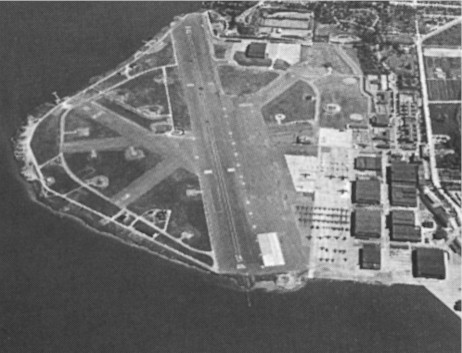
Carrier Air Service Unit Seven (CASU-7) Yontan Field, Okinawa
 Uncle John returned to the war with CASU-7. By the time he arrived in Okinawa, the Navy and the rest of the armed forces were making preparations for Operation Olympic, the Invasion of Japan. The invasion of the island of Kyushu in mainland Japan was set for late September 1945.
However, events would prove this invasion unnecessary as the U.S. Force would drop two Atomic bombs on Hiroshima
Uncle John returned to the war with CASU-7. By the time he arrived in Okinawa, the Navy and the rest of the armed forces were making preparations for Operation Olympic, the Invasion of Japan. The invasion of the island of Kyushu in mainland Japan was set for late September 1945.
However, events would prove this invasion unnecessary as the U.S. Force would drop two Atomic bombs on Hiroshima
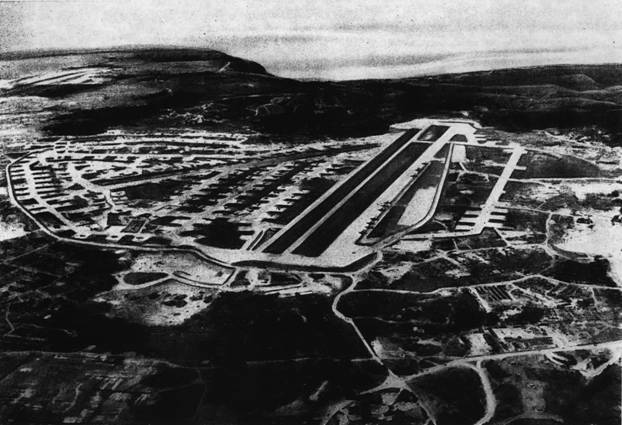 and Nagasaki in
August of 1945. Only after the tremendous amount of death and destruction that these two devices would bring would Japan finally capitulate and surrender.
CASU-7 would return to it's home base of NAS Seattle. Uncle John would stay there until June
of 1946 when he would transfer to the Naval Base at Tsingtao, China. Uncle John's story would continue.
and Nagasaki in
August of 1945. Only after the tremendous amount of death and destruction that these two devices would bring would Japan finally capitulate and surrender.
CASU-7 would return to it's home base of NAS Seattle. Uncle John would stay there until June
of 1946 when he would transfer to the Naval Base at Tsingtao, China. Uncle John's story would continue.
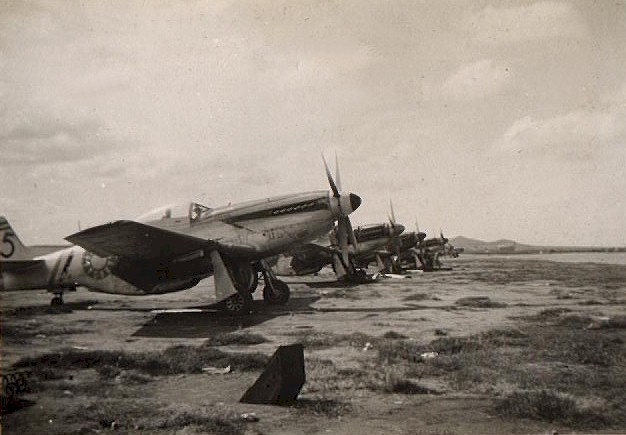 Post WWII-
China Service: Tsingtao Air Field
Post WWII-
China Service: Tsingtao Air Field
 Joao
(John) Santos: Home Page
Joao
(John) Santos: Home Page They
Served with Honor: Home Page
They
Served with Honor: Home Page